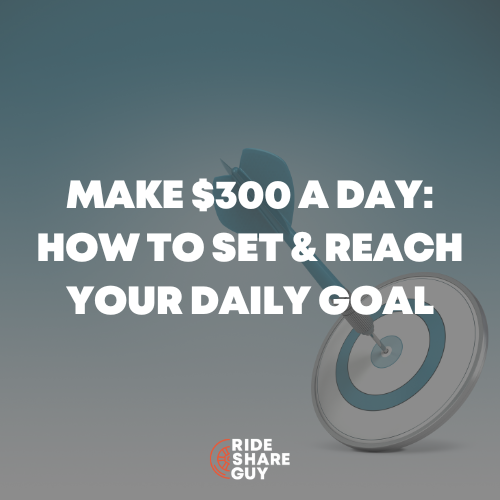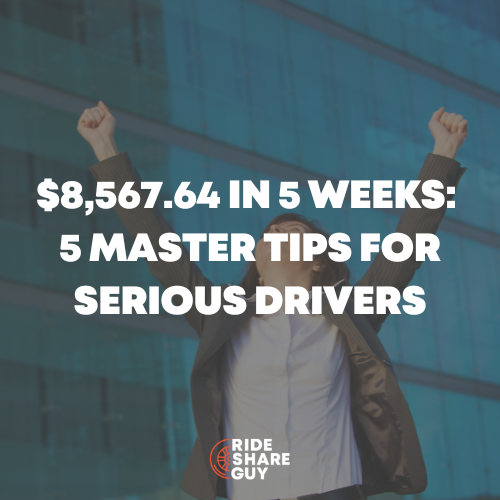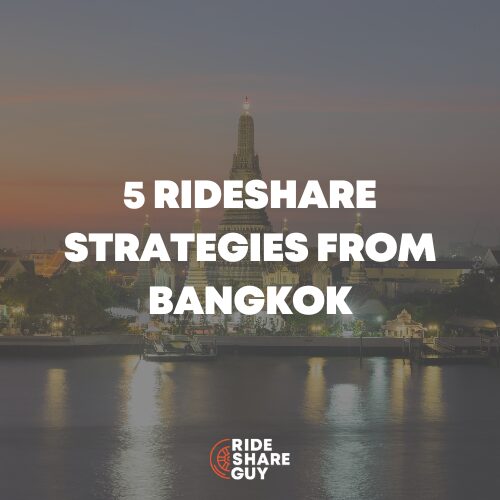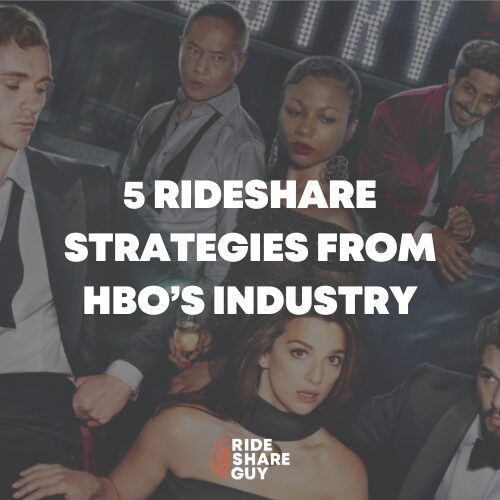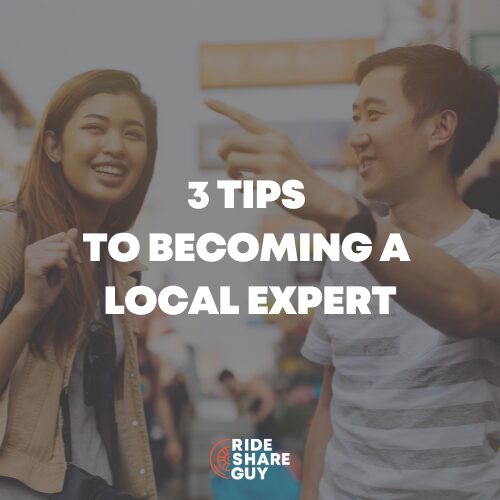Senior RSG Contributor Sergio Avedian went out and drove for Uber applying some of the strategies he has written about in the past. Did knowing the destination and Uber bringing back the old surge multiplier make a difference in his earnings? In this article he compares his earnings for three different periods – with the surge multiplier from a year ago then with the flat rate surge, and now!
Let’s call it the way it is, Uber algorithms are in charge of a driver’s fortune for any given shift. However, it is the driver’s duty to figure out what the best strategies are to get lucrative rides. Every city is different but to drive aimlessly accepting every ping is not working smart, it is working hard. Uber and Lyft these days have discontinued or reduced Quests, PDB (Power Driver Bonus) and CRB (Consecutive Ride Bonus) to the point that accepting every request is just asking for trouble. Even the most basic strategies applied will result in higher earnings. Study the driver app, take a lot of screenshots during your shifts, analyze them at the end of your shift, make mental notes. Driving for Uber is not checkers, it is chess!
I have to admit, with all of Uber’s recent changes in light of AB5, I have really liked seeing passenger destinations before accepting a ride. I haven’t put a ton of hours in yet, but it was enough for me to conclude that this is definitely a huge advantage to have, especially for a strategic driver like me!
Do I like the surge multiplier replacing the flat rate surge (penny surge)? Heck yeah! Unicorns are back, so let’s get back to going to our favorite spots and cherry pick the best rides! Yes, thanks to AB5 (which Uber has admitted is the reason for this), we now get much better rides.
I have written extensively in the past about surge-only driving strategies, but I thought I became a dinosaur when Uber replaced the multiplier with the flat rate surge. As drivers, we have to learn to zig when Uber zags to continue to maximize earnings.
Pre – Flat Rate Surge Earnings – April 2019
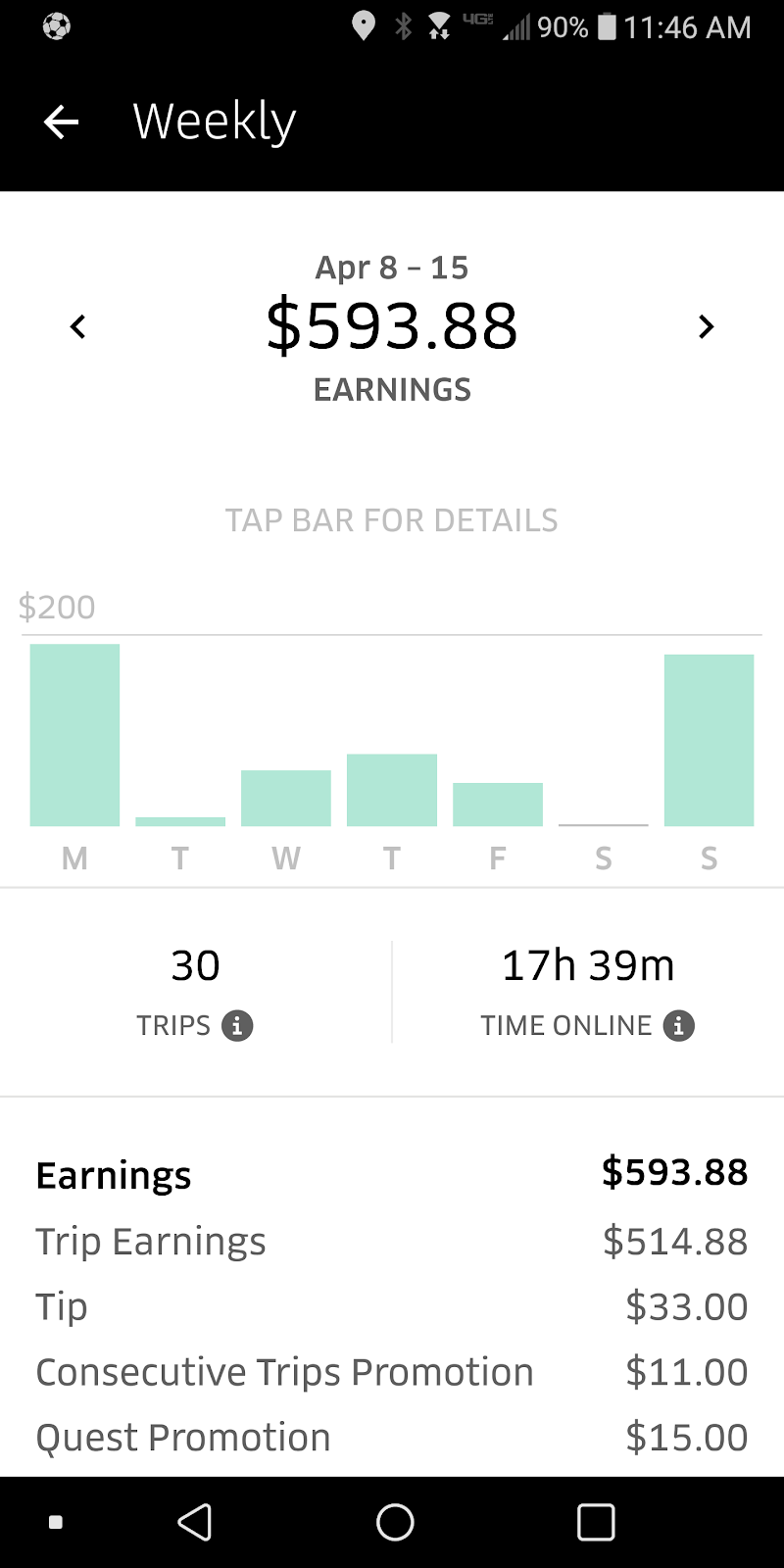
Let’s analyze these numbers:
- $34 per app on hour
- Almost $20 per ride
- About 21 hours door to door ($28/hour)
- 440 total miles driven ($1.35/mile)
- 80%+ of the rides on Surge
I would say those are very respectable, but with low Los Angeles rates of 60 cents a mile and 21 cents a minute, it is not possible to achieve these numbers if one doesn’t apply surge only/mostly strategies.
After Flat Rate Surge Earnings – Sep. 2019
I have been driving for 4 years, so believe me when I say I’ve seen it all from Uber. At 60 cents a mile/21 cents a minute, driving in Los Angeles is a money-loser.
When the flat rate/penny surge rolled in, I had to change my strategy to adapt. As a reminder, when I interviewed 40 Uber and Lyft drivers, most said they just accepted every ping that came their way. If you want to survive and thrive as a driver, you have to adapt.
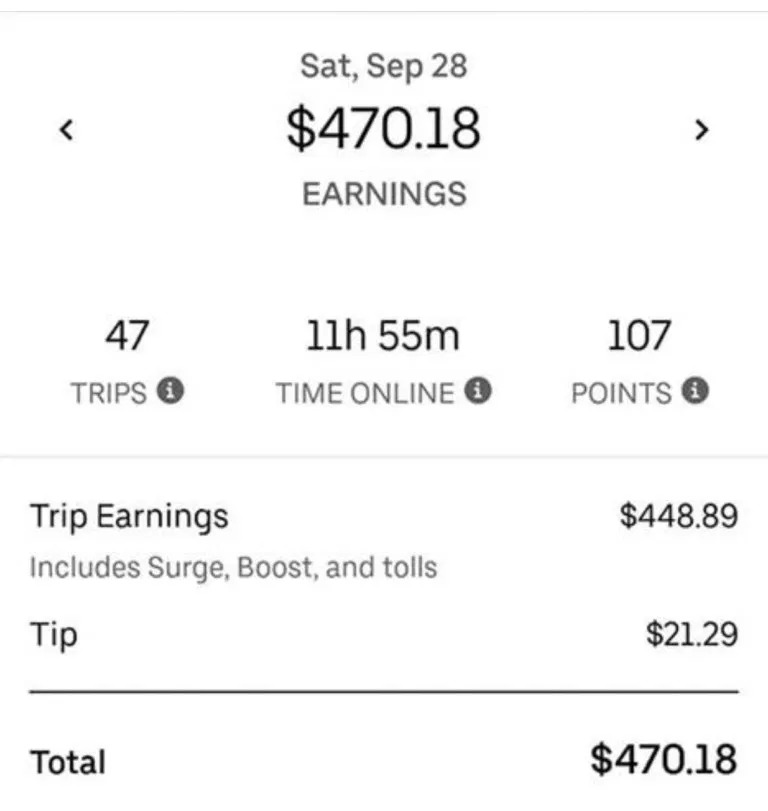
Let’s analyze these numbers:
- $40 per app on hour
- Almost $10 per ride
- About 13.5 hours door to door ($35/hour)
- 370 total miles driven ($1.27/mile)
- 85%+ of the rides on Surge
Great numbers overall except the dollar per ride amount. Believe me, I worked my butt off that shift. I just wanted to prove to myself that it is doable.
Of course the next day I was out of commission because it is exhausting to drive non-stop for 12 hours. I don’t know how some drivers do it day after day, I have the utmost respect for them!
Earnings After All The Uber Driver App Changes
I only drove a couple of days of the week, one early morning and one afternoon shift to test the waters. With the new Uber feature updates, I actually enjoyed driving again! More importantly, passing on money-losing rides gave me immense satisfaction.
As usual, I did my scheduled ride strategy on Lyft for one of those two days. All drivers should be on both the Uber and Lyft platforms. Although I rarely accept regular rides for Lyft these days, I still think their scheduled rides are far superior to Uber. I live in the suburbs of Los Angeles, about 30 miles from the core of the city and I hate dead miles, so scheduled rides on the Lyft platform is one way for me to get rides to the airport and start my day with a nice payout of $30-40!
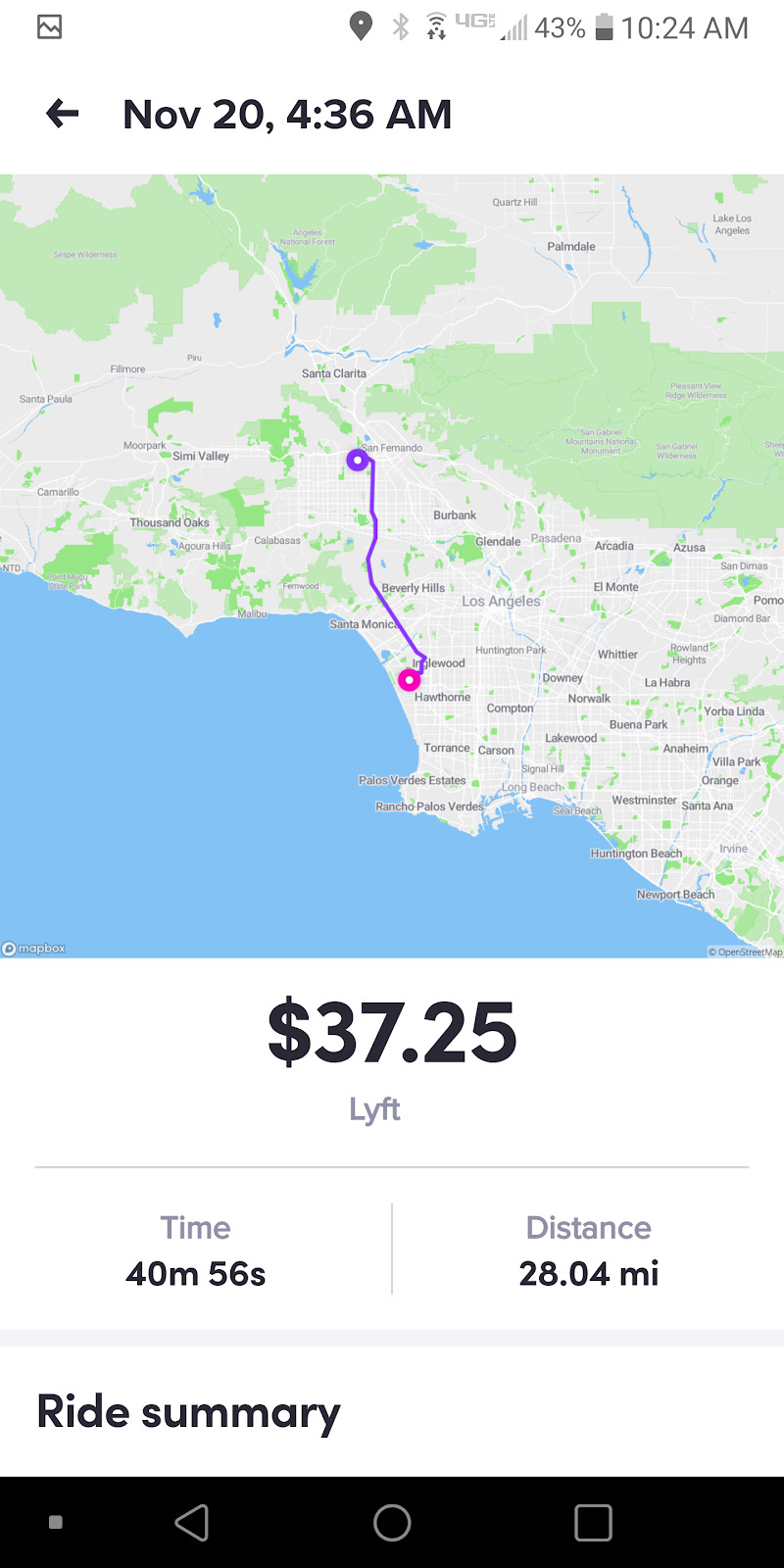
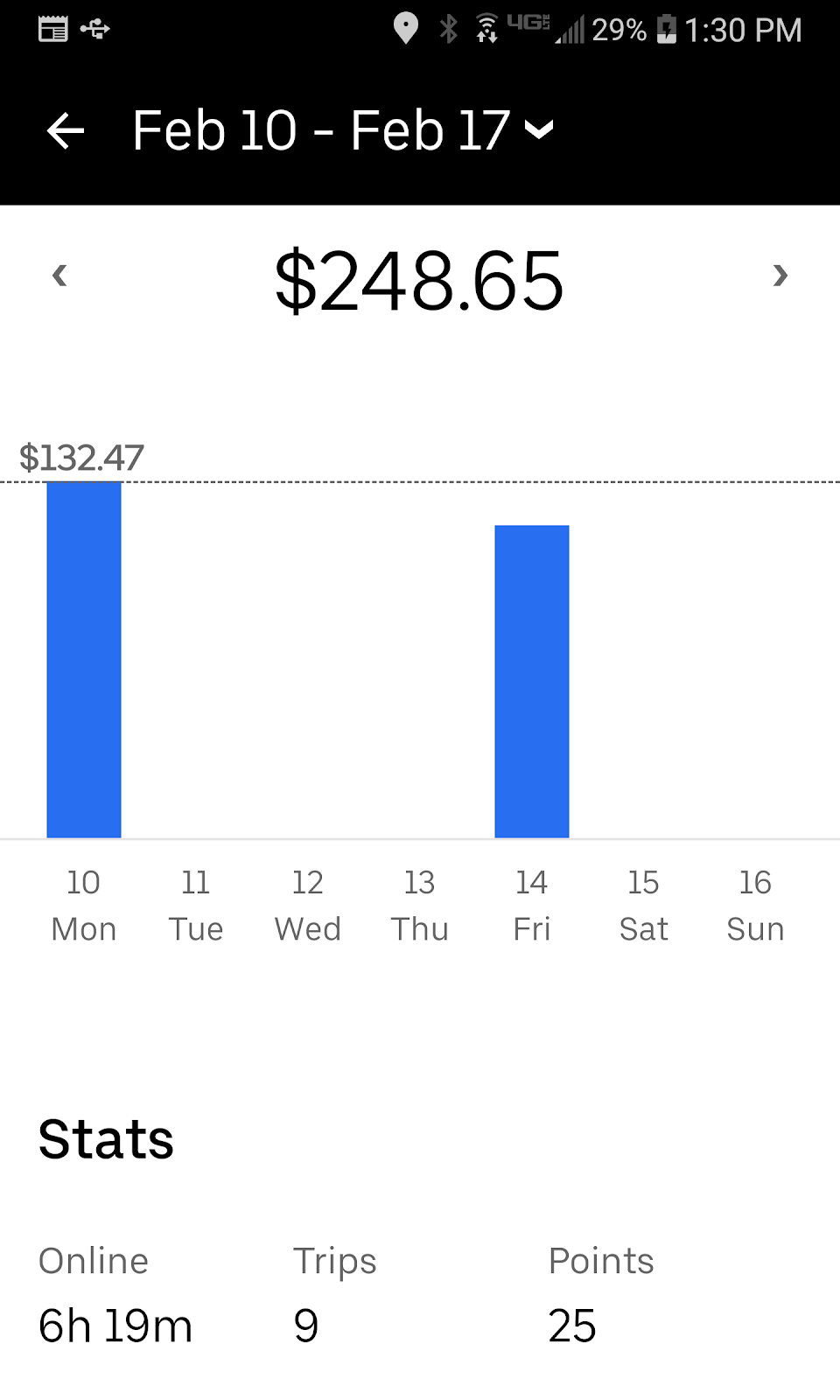
Let’s analyze these numbers:
- $40 per app on hour
- Almost $28 per ride
- About 7.5 hours door to door ($33/hour)
- 130 total miles driven ($1.91/mile)
- 70%+ of the rides on Surge
These are stellar numbers all around, and I think they are definitely achievable for morning shift drivers who know what they are doing and deploy the 3Ps (Patience, Position & Planning).
What I am most proud of is the dollar per mile number at almost $2. It definitely would have been over $2 per mile since 3 out of the 9 ride total were on destination filter, 2 of the 3 at base rates.
Takeaways for Rideshare Driving Post All The Changes
Undoubtedly, mini unicorns are back. Just take a look at these two rides!
They were the bulk of my gross earnings for the week, and yes, they are out there, but you have to position yourself correctly to get them and exercise patience. Will Uber put you in timeouts for declining too many trips? Yes, they will! But one ride like these a day will make any driver’s day!
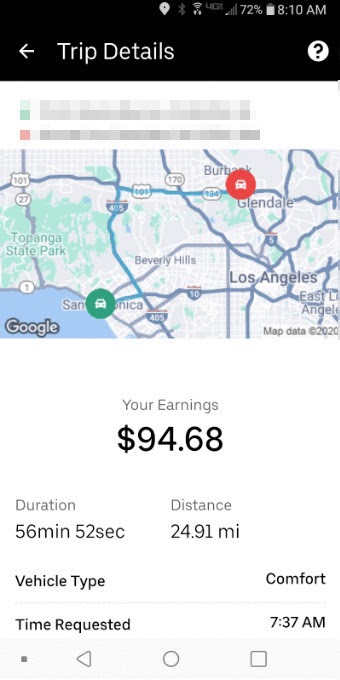
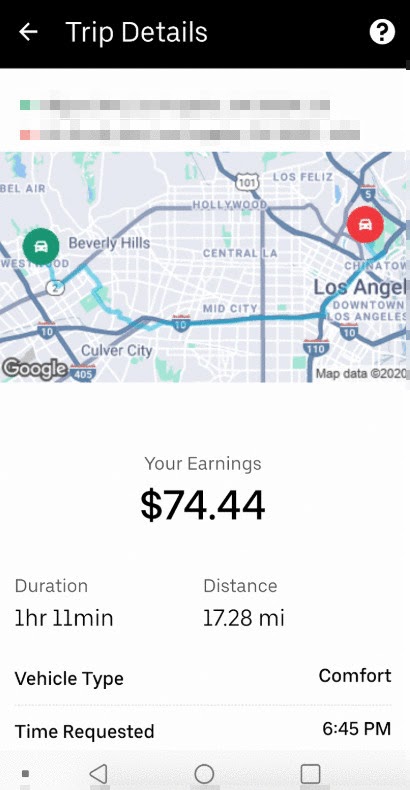

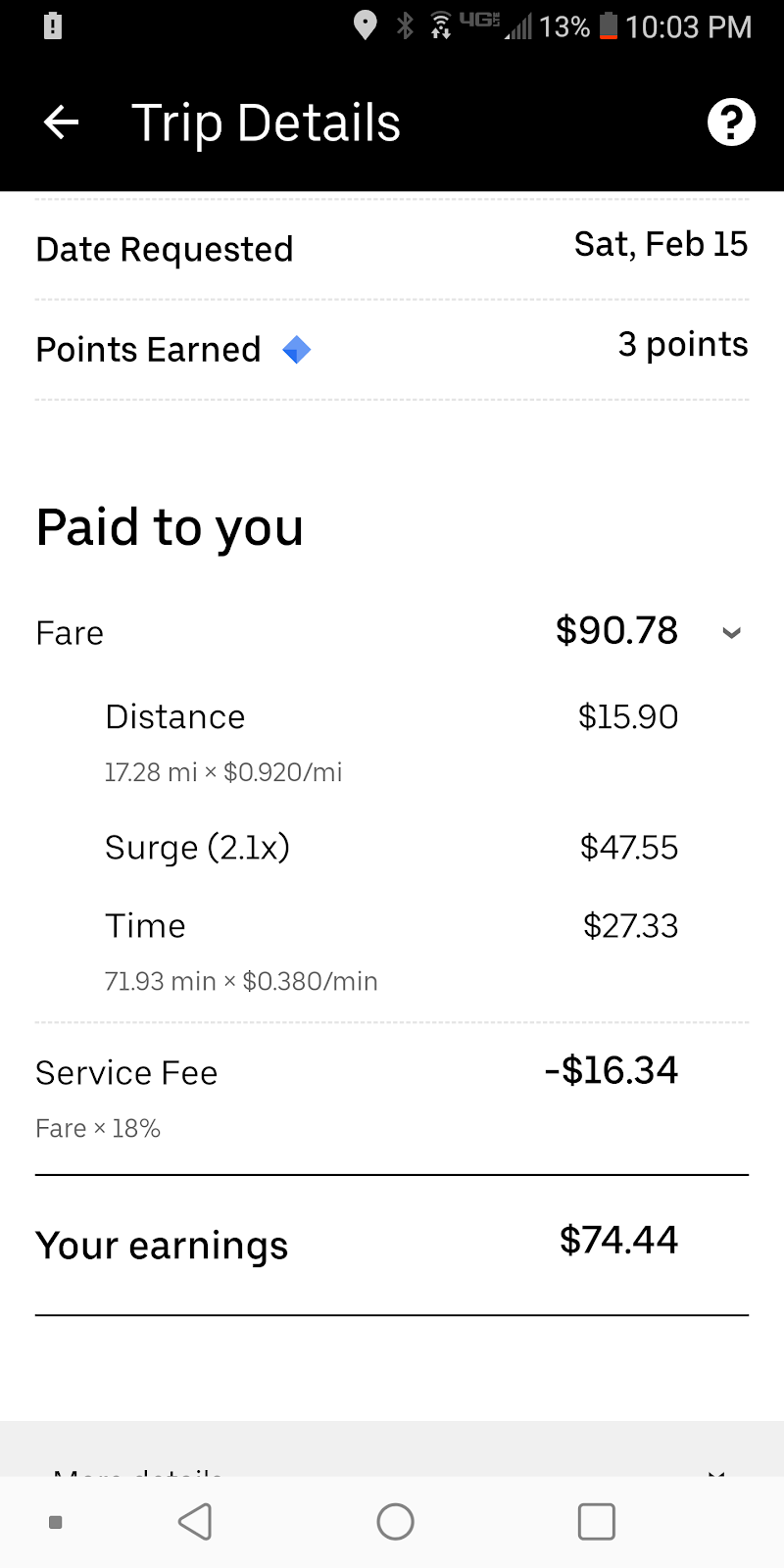
Let’s take a look at the trips above in detail. I have explained in my previous article regarding the Platform Access Agreement that Uber is now considering itself a Payment Processing Agency for the driver. Passengers are the driver’s customers and drivers are Uber’s customers. Uber charges the drivers a Service Fee (20-28%) to access its technology platform as well as a separate Variable Marketplace Fee ($3 in most cases) to passengers.
In January, Uber announced it would cap the commision it charges the drivers at 25% for the Uber X platform. Basically, the passenger is charged by miles/minutes, no more upfront pricing (plus applicable surge) and the Service Fee at maximum of 25% will be deducted from that amount.
The Service Fee on the rides above is 18%. The reason for that is Comfort ride commissions are 28%, and both those rides took advantage of the Boost (replaced Consecutive Ride Bonus) Uber offers during most morning and afternoon rush hour periods to the tune of a 10% discount, hence the Service Fee I paid was reduced to 18%.
There are still glitches in the ping system – train your eyes and study the ping screen carefully. Uber will try to throw you base rides in the middle of a surge zone or scheduled trips where the passenger is guaranteed base rates. Don’t fall for those Uber algorithm tricks!
Take a look at the images below:
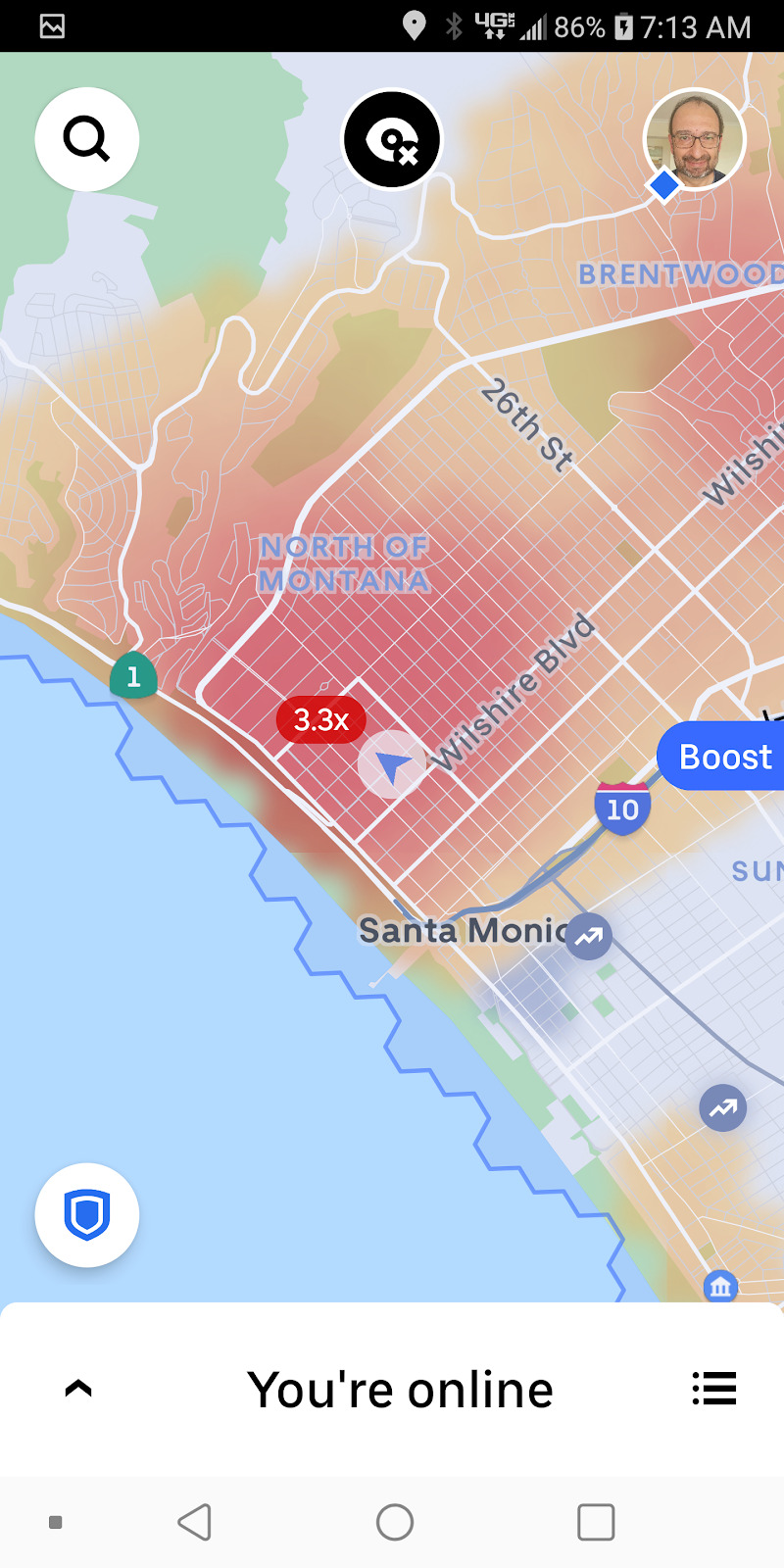
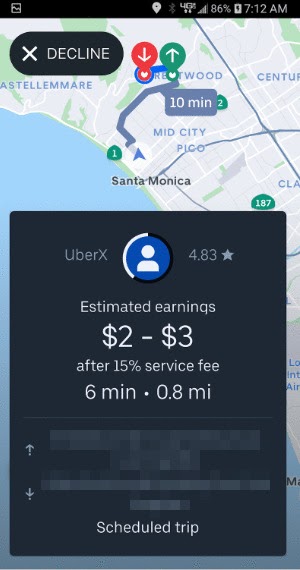

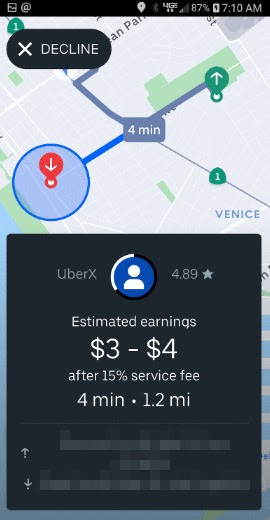
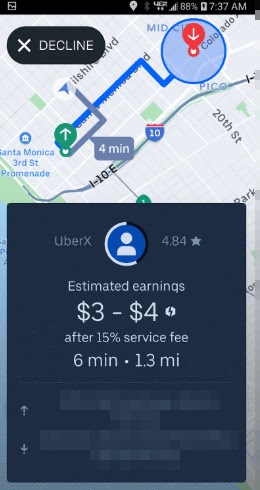
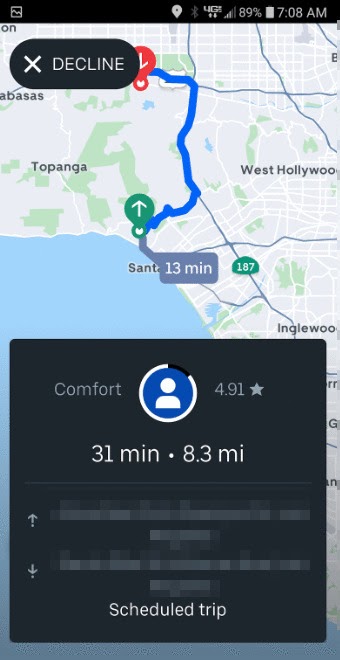
I declined all the rides above for various reasons, mostly for lack of surge in a surge zone, for distance/duration and positioning purposes. I can unequivocally tell you that rejection of short rides by drivers since Uber started showing destination and Uber’s replacement of the weekly Quests and CRBs is hurting it badly. There’s no incentive for drivers to pick these rides up any longer.
With that in mind, Uber introduced an individual Trip Premium trial in some cities. Will drivers start picking up Shorties again? Time will tell but I won’t, I love cherry picking too much! It is always about quality over quantity with me, and I will enjoy this party as long as it lasts! Because there are pings like this out there.
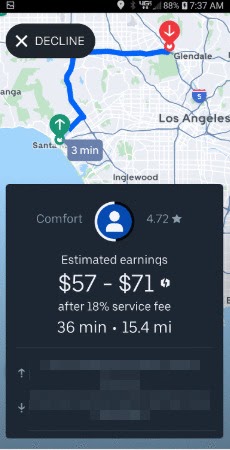
It is no mystery that the largest font on the packed ping screen is the dollar amount now. Uber would like to emphasize the fare more than anything else.
It took me about a week to train my eyes, but I finally settled on two spots: studying the map first regarding pick-up distance and the approximate destination (know your city and its surge patterns) if I would like to position myself there when the ride ends. I also look at the duration and distance of the trip, since in Los Angeles traffic a 5 mile ride could take an hour.
I would ask Uber to kindly add one more piece of information to the ping screen: the surge multiplier number like before, because as you can see, the driver is just shown the surge logo now! It is still a shady guessing game for drivers.
Is Uber Taking This All Away From Us Already?
Uber made all drivers sign a new PAA on January 6, 2020. In it, as the following excerpt clearly implies, Uber is not in control of the driver (ABC test of AB5) and we can choose what rides to accept or decline at our discretion without worrying about retaliation.
After testing the system for a few hours, I got this warning from Uber. I had probably rejected 5-7 rides in a row to get what I wanted. Am I surprised? No, not at all, Uber hates it that AB5 is forcing these seemingly positive changes for drivers.
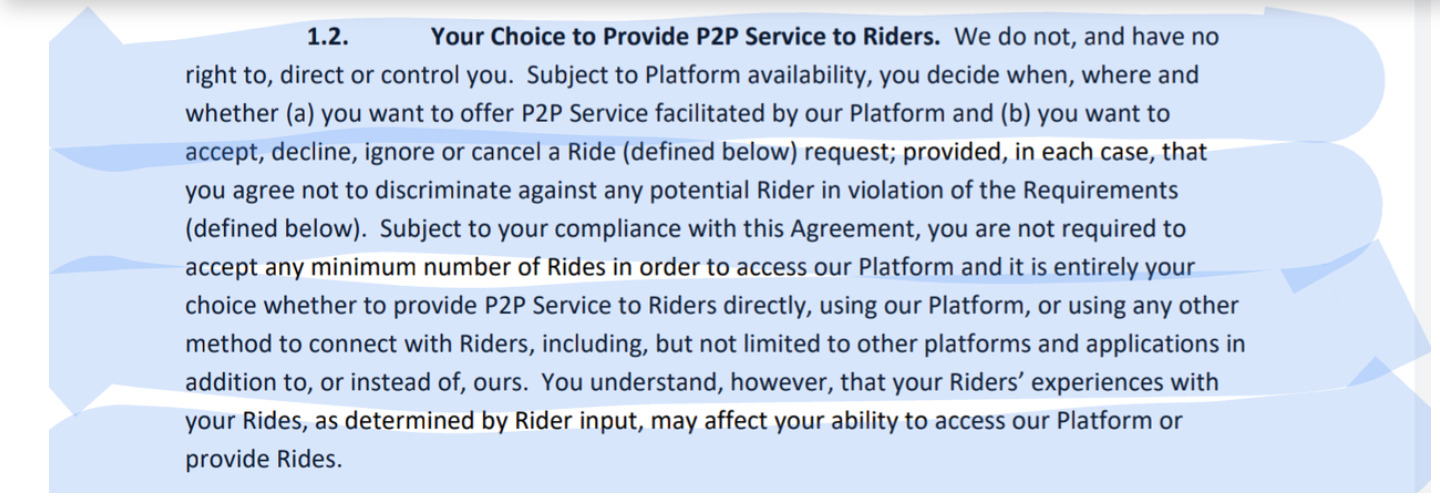
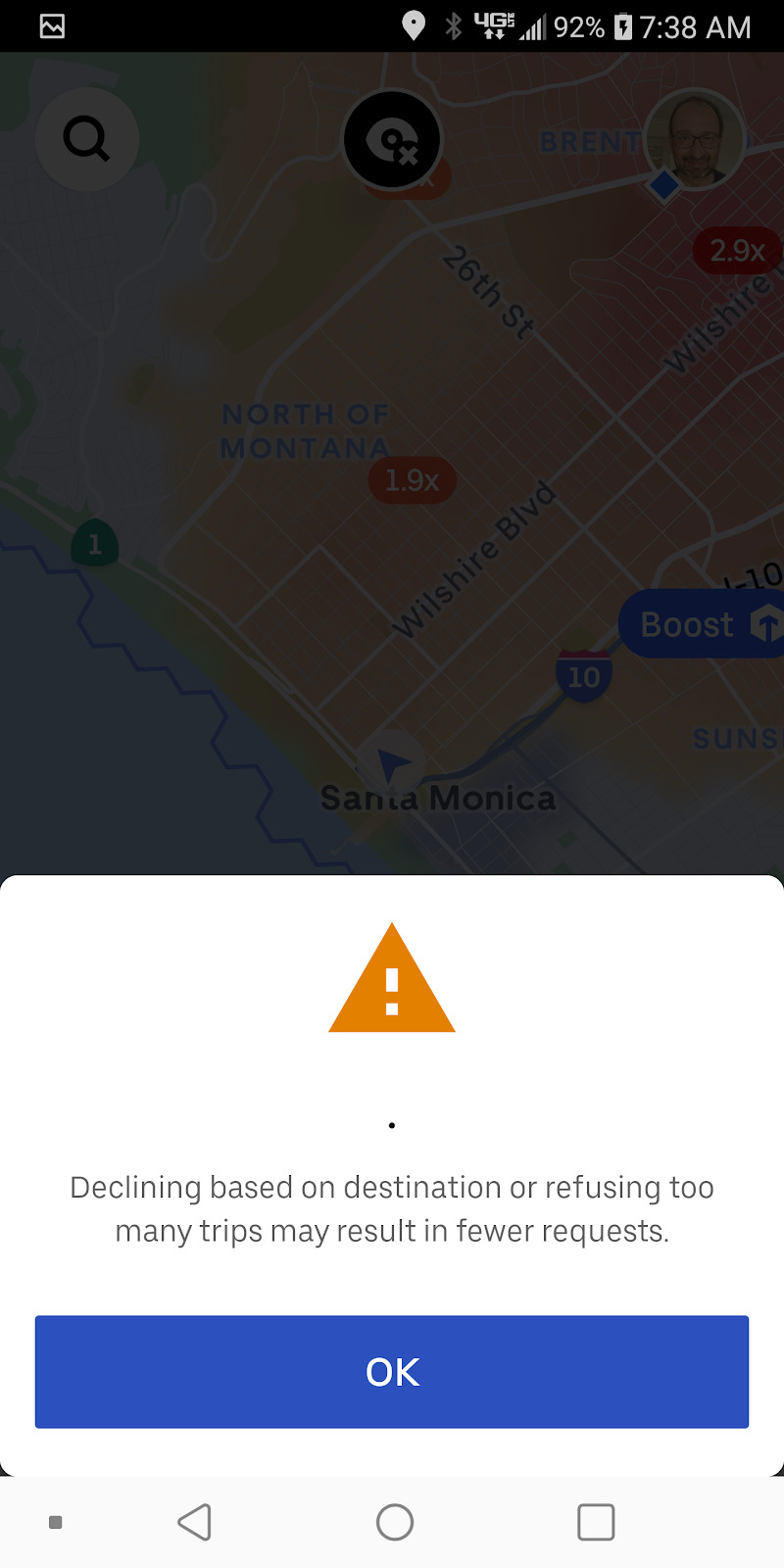
Time will tell if Uber ends up walking back or changing some of the new features it’s rolled out, but chances are they’re not happy about them.
Readers, if you’ve been driving in California, what have your experiences with Uber’s new features been like? Do you feel like you have more control over your rides now?
-Sergio @ RSG
